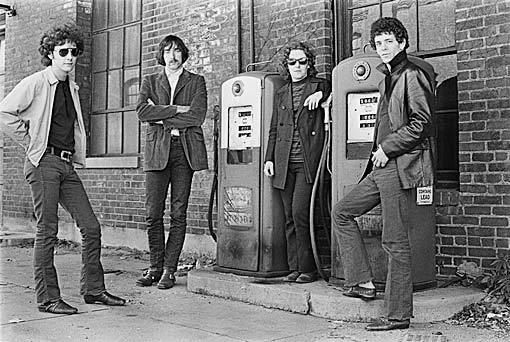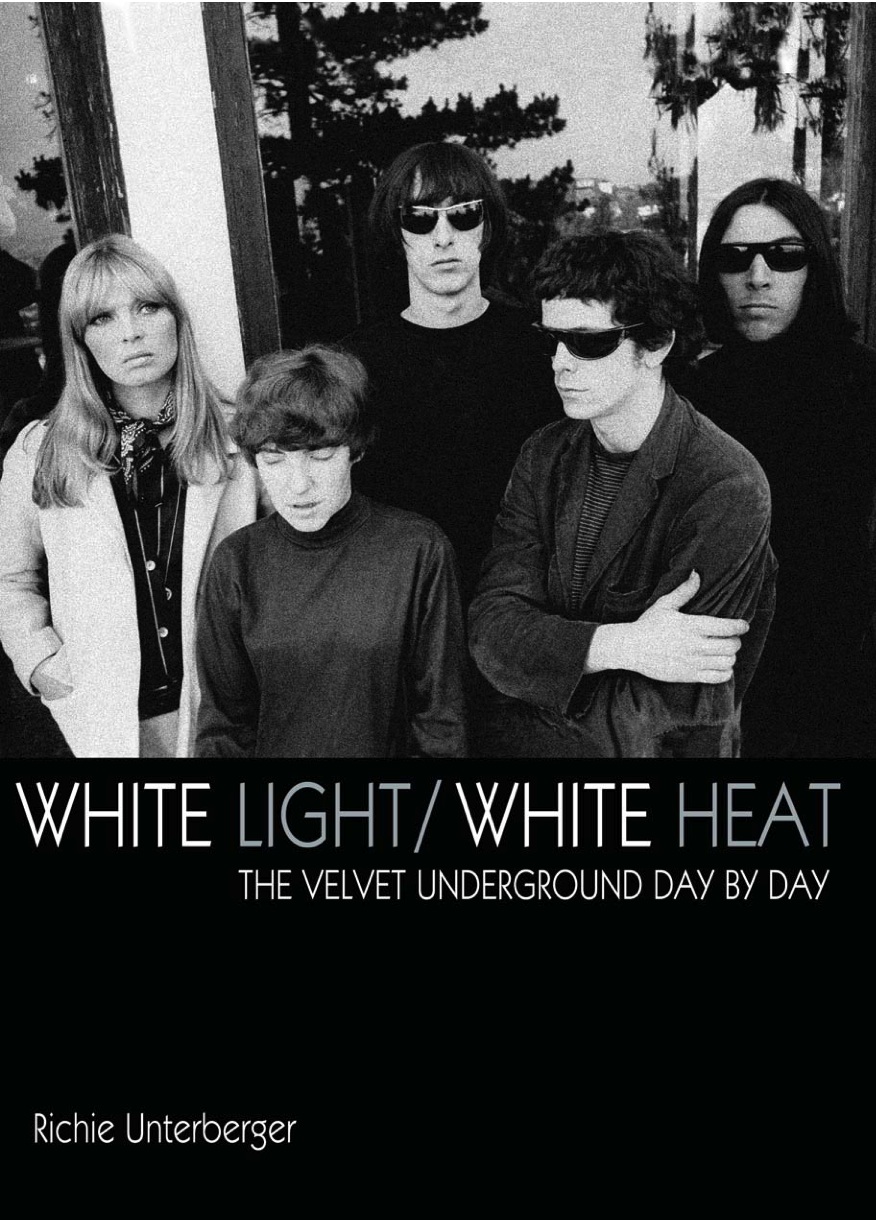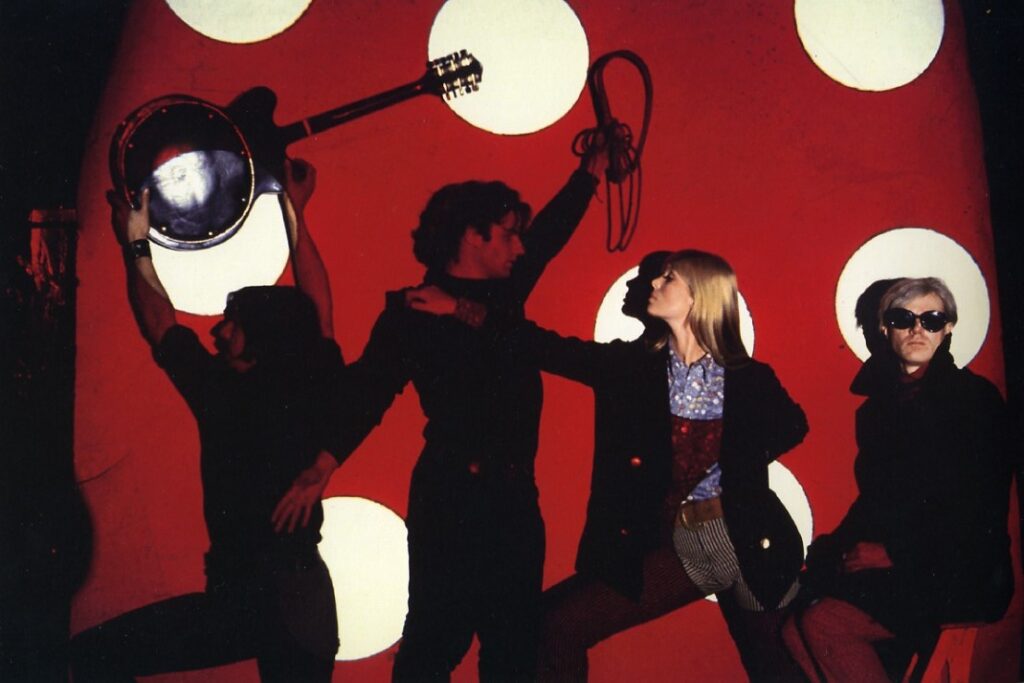A few years ago I was told of a conversation that once took place in a magazine office. Laying out a page of gig listings, one music writer asked another the derivation of the name of the All Tomorrow’s Parties festival. Thinking it just a case of momentary block, the second writer replied, "Oh, it’s a song on the first Velvets album’. Getting a blank stare in response, the prompting continued. ‘You know… the Velvet Underground and Nico?… the Banana album?… Andy Warhol managed them?… he designed the sleeve?… Lou Reed?… John Cale?… Mo Tucker?… the spiritual predecessor of every art-rock band ever?… permanently in every top ten of ‘best albums ever made’?…” Eventually a pause was followed with the confidently ignorant reply, “Oh, I don’t like American music anyway.”
Without meaning to kick off a debate about rock music, it still seems inconceivable that anyone paid to have an opinion on music (or pretty much any other branch of the arts) could never have heard of the Velvet Underground or Warhol and still keep a job. Maybe times have changed since Brian Eno observed that everyone who bought a Velvets record went on to form a band (or write about them), but from the drab social worker rock of Glasvegas and their stand-up lady drummer to the unambiguous ambiguity of Antony Hegarty and Jeffrey Lewis’s caffeinated tales of feeble bohemia, their influence is still present and direct. Although The Quietus proudly refuses to kiss Beatle boot or otherwise dwell in predictable nostalgia, the VU continue to fascinate. Hell, a friend of mine had their name tattooed on his arm in his late thirties, reasonably assuming that having liked them for twenty five years it was unlikely he’d ever come to regret it.
In a similar display of dedication author Richie Unterberger, best known for tomes like the splendidly self-descriptive Unknown Legends of Rock’n’Roll and the more traditional Unreleased Beatles, has written the definitive bible of VU too, called White Light/White Heat, The Velvet Underground Day-By-Day. It’s a whopper, over 350 pages, three columns a page, packed with information from the elementary to the arcane. Sadly absent though is the legendary response of Warhol’s own ‘manager’ Paul Morrissey, when asked what the Velvets lived on, seeing as they didn’t appear to make any money. He pondered his charges’ situation before declaring “They eat a lot at parties.”

Other such curious facts abound. When a pregnant Maureen Tucker was unavailable for their New York swansong, a 1970 residency at Max’s, her temporary replacement Billy Yule, seventeen year old brother of guitarist Doug, was paid with meals and cinema tickets. But he had to stump up for his own train fare in from Long Island. Angus Maclise, their original drummer who quit rather than sell-out by charging admission and practising, was the only Velvet to make it to Woodstock, performing something esoteric in the emergency food tent. Unexpectedly, Lou Reed’s favourite ever song for a summer was the Kinks’ ‘Lazy Old Sun’, as languid as his own efforts were tense.
It’s instructive too. Though rock lore usually tells of a glorious failure by a band far too far ahead of their time to actually make it, the avuncular Unterberger makes it clear that the Velvets were respectably successful in their day, something of a college dorm favourite nationwide.
“On one hand Eno was right- the Velvets had an influence on musicians way beyond their sales. But in the first two years they sold sixty thousand copies of the Banana album, and that’s a big cult,” he says, “That’s really why they’re so beloved now, as they were reasonably popular then.”
Far from being a local New York cult back in the day, the Velvets hardly played their home town at all. Yet they shared bills across America with the likes of the Grateful Dead (who ran over their allotted time, eventually playing to an empty hall), the Jeff Beck and Jimmy Page line-up of the Yardbirds, who were impressed enough to cover ‘Waiting For The Man’, and the rising MC5, who had to be dissuaded from starting a riot in Boston at the Tea Party, famously the Velvets’ home from home. Neither huge or unknown and always hopelessly managed, they operated in a curious sub-fame zone. Legendary Doors twat Ray Manzarek patronised them. Their puritanical labelmate Frank Zappa had beef with their alleged drug habits, somewhat ironic, since his own addiction killed him while Lou Reed still drones on, forever finding new ways to murder his best songs… But Hendrix liked them and told them so, and a sharp Dave Bowie was the first artist in the world to cover the Velvets, having scored an early acetate of the first album. Mick Jagger even confessed to the NME that the Stones’ ‘Stray Cat Blues’ was modelled on the Velvets’ ‘Heroin’.
“There’s no other group in rock history with such a disparity between the size of their audience when active and the size of their audience subsequently,” points out Unterberger, a specialist in sixties music who grew up too late to see the Velvets. He discovered them in the late seventies, a time when their critical stock was at its lowest, their records unavailable.
“Even if you were a big Velvets fan you couldn’t find out about their history,” he recalls, and certainly until the publication of Victor Bockris’s subtly pretentious biography Uptight in 1983, facts were scarce. “The association with non-musical worlds has led to some fascination. There’s a certain crossover with pop art and that New York sleazy subculture,” he points out, perhaps best captured in the brilliant Onion historical headline ‘ANDY WARHOL’S FACTORY LAYS OFF 195 JUNKIES’. Yet their passing part in art history alone didn’t make the Velvets so enduring.
“The music is timeless, partly because it wasn’t comparable to other things going on at the time. Listen to the Byrds and great though they are the influences are obvious. You can’t dissect the Velvets so easily,” he explains, “And more than any other sixties major bands the Velvet Underground anticipated punk, new wave and alternative rock. I don’t mean that makes them better but it’s still true.”
His own favourite VU tune is, unsurprisingly, ‘White Light/White Heat’ itself, specifically the version from the Live 1969 album, and here revealed as not merely a song about amphetamine rush, though it’s that as well. And, as he points out, ‘Rock’n’Roll’ should have been a top ten single, yet it was never released as one at all.
Second-guessing the canon of the future is an impossible game as Unterberger admits, “I would never have predicted Nick Drake over Roy Harper.” Uniquely though, the Velvet Underground didn’t rewrite their own history afterwards. Instead everyone else did that for them. Nonetheless, It still makes for one hell of a yarn.

White Light/White Heat, The Velvet Underground Day-By-Day’ by Richie Unterberger is out now, published by Jawbone Press.
Steve Jelbert is a lone maverick music journalist, often scribing for The Times by day, and mooching out to ‘Loaded’ at night when he thinks everyone has gone to bed. He has never owned a stripey polo neck sweater or even donned a borrowed black beret that his mate bought while on a beano to Dover market.



